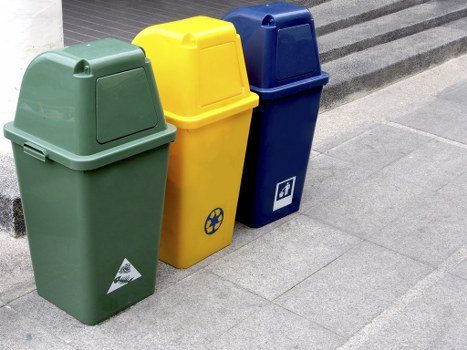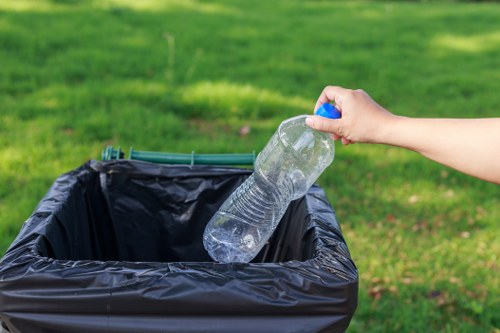Construction Waste Clearance in Docklands

Managing construction projects in Docklands comes with its unique set of challenges, one of the most significant being the effective clearance of construction waste. Proper waste management not only ensures a clean and safe environment but also adheres to local regulations and promotes sustainability.
Construction waste clearance in Docklands requires a strategic approach due to the area's dense urban setting and strict environmental guidelines. Contractors and property developers must navigate these complexities to maintain project timelines and minimize environmental impact.
Effective waste clearance involves the removal of various materials such as concrete, bricks, metals, wood, and other construction debris. Proper sorting and disposal are essential to adhere to Docklands' environmental policies and to promote recycling and reuse where possible.
Why Proper Waste Clearance is Essential

Proper construction waste clearance is crucial for several reasons:
- Environmental Protection: Removing waste responsibly helps protect Docklands' natural beauty and reduces pollution.
- Regulatory Compliance: Adhering to local waste disposal regulations avoids hefty fines and legal issues.
- Safety: Clearing debris reduces the risk of accidents on construction sites.
- Cost Efficiency: Efficient waste management can lower overall project costs by minimizing delays and optimizing resource use.
Environmental Impact of Construction Waste

Construction activities generate a significant amount of waste, much of which can be harmful to the environment if not managed correctly. Materials like asbestos, lead, and other hazardous substances require special handling and disposal methods to prevent contamination.
Recycling construction waste is an effective way to mitigate environmental impact. Materials such as metal, concrete, and wood can be recycled and repurposed, reducing the need for new resources and minimizing landfill usage.
Adopting sustainable waste management practices not only benefits the environment but also enhances the reputation of businesses operating in Docklands, showcasing their commitment to sustainability.
Steps for Effective Construction Waste Clearance
Implementing an effective waste clearance strategy involves several key steps:
- Assessment: Evaluate the types and quantities of waste generated.
- Segregation: Sort waste into categories such as recyclable, hazardous, and non-recyclable materials.
- Collection: Efficiently collect and transport waste from the construction site.
- Disposal: Dispose of waste in compliance with local regulations.
- Recycling and Reuse: Maximize recycling efforts to reduce the overall waste footprint.
Choosing the Right Waste Clearance Service

Selecting a reliable construction waste clearance service is vital for the smooth execution of waste management plans. Factors to consider include the company's experience, compliance with regulations, range of services offered, and commitment to sustainability.
It's essential to work with professionals who understand the specific requirements of the Docklands area and can provide tailored solutions to meet the project's unique needs.
Additionally, partnering with a service that offers transparent pricing and flexible scheduling can help ensure that waste clearance does not disrupt construction timelines or budgets.
Sustainable Practices in Waste Management
Sustainability in construction waste clearance involves minimizing waste generation, maximizing recycling, and responsibly disposing of non-recyclable materials. Implementing green practices not only benefits the environment but also contributes to the long-term success of construction projects.
Recycling Initiatives
- Material Separation: Separating materials at the source facilitates easier recycling.
- Partnerships: Collaborating with recycling facilities ensures efficient processing of recyclable waste.
- Innovative Solutions: Utilizing new technologies can enhance recycling processes and reduce waste.
Waste Reduction Strategies
Implementing waste reduction strategies is a proactive approach to minimizing the amount of waste generated during construction. Strategies include:
- Optimizing Material Use: Planning and accurate measurement can reduce excess material.
- Reuse: Reusing materials whenever possible decreases the need for new resources.
- Efficient Design: Designing buildings with waste minimization in mind ensures fewer materials are wasted.
Compliance with Docklands Regulations
Adhering to Docklands' construction waste regulations is mandatory. Non-compliance can result in significant fines and project delays. It's essential to stay updated with local laws and guidelines to ensure all waste management practices meet the required standards.
Benefits of Professional Waste Clearance Services

Engaging professional construction waste clearance services offers numerous benefits:
- Expertise: Professionals have the knowledge and experience to handle various types of construction waste effectively.
- Efficiency: Streamlined processes ensure timely waste removal, keeping projects on schedule.
- Safety: Trained personnel can manage hazardous materials safely, reducing the risk of accidents.
- Cost Savings: Efficient waste management can lead to substantial cost reductions by minimizing material waste and avoiding fines.
Case Studies: Successful Waste Clearance Projects in Docklands
Several projects in Docklands have successfully implemented effective waste clearance strategies, resulting in cleaner sites and enhanced sustainability. These case studies highlight the importance of strategic planning and professional services in achieving optimal waste management outcomes.
Innovative Solutions for Complex Projects
Complex construction projects often present unique waste management challenges. Professional clearance services utilize innovative solutions such as advanced sorting technologies and real-time waste tracking to address these challenges effectively.
Future Trends in Construction Waste Clearance
The field of construction waste management is continuously evolving, with emerging trends focusing on greater sustainability and efficiency. Future developments may include increased automation, enhanced recycling technologies, and more stringent environmental regulations.
Conclusion
Construction waste clearance in Docklands is a critical component of any construction project. By implementing effective waste management strategies and partnering with professional services, contractors and developers can ensure their projects are environmentally responsible, compliant with regulations, and cost-effective.
Contact us today to learn more about our expert construction waste clearance services and how we can help your Docklands project succeed.
Discover comprehensive construction waste clearance in Docklands, emphasizing environmental protection, regulatory compliance, and sustainable practices. Learn steps to effective waste management and benefits of professional services.
Book NowGet In Touch With Us.
Please fill out the form below to send us an email and we will get back to you as soon as possible.